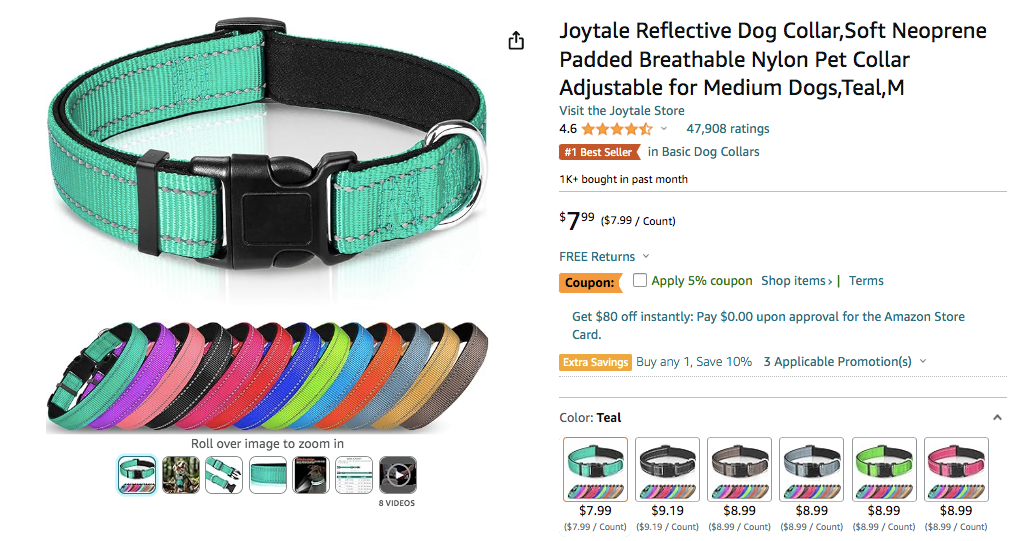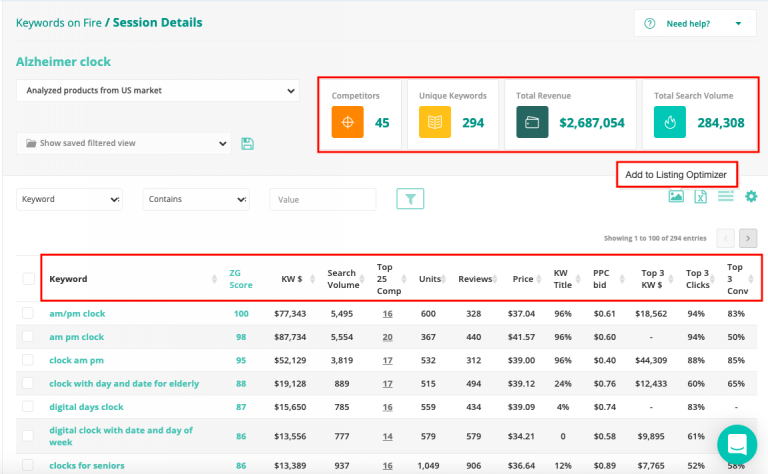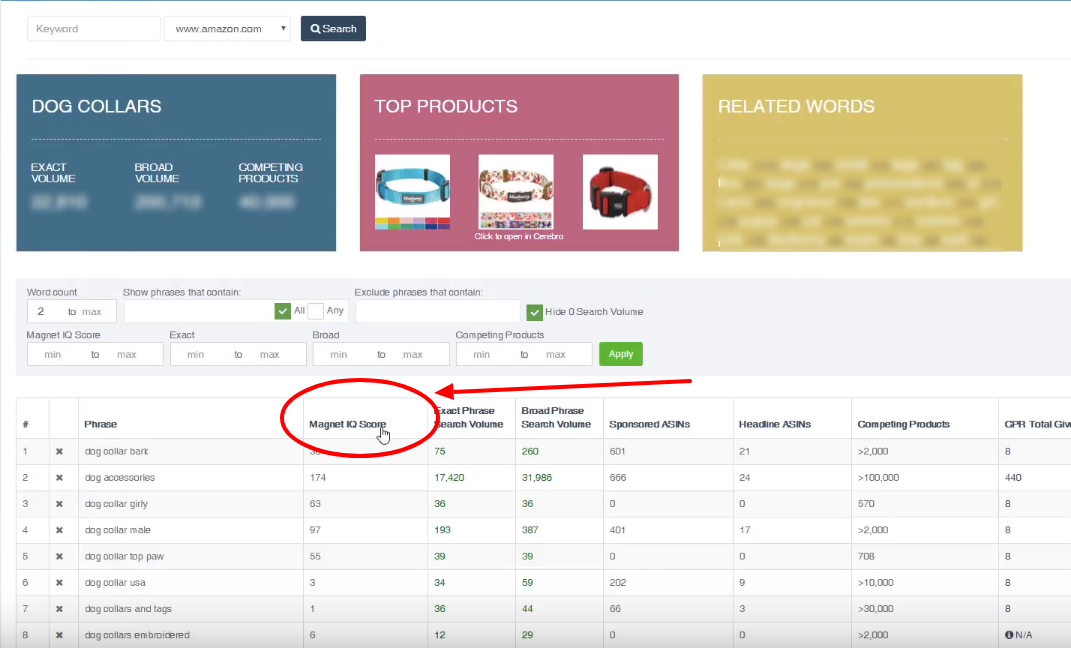Beyond Search Volume: A Smarter Approach to Amazon Keyword Research
Thinking about optimizing your Amazon listings but don’t know where to start? Keyword research provides an excellent entry point into your optimization journey. Dialing in the right high-potential keywords from the outset lays a strong foundation for driving visibility on search engines and Amazon search results.
When most sellers approach keyword research, the first thing they zero in on is search volume—how often people search for a given term on Google or Amazon. And rightly so, high search volume for a target keyword looks attractive at first glance. After all, you want as many eyeballs on your listings as possible right? But search volume isn't always king when it comes to telling metrics.
Experienced Amazon sellers know that obsession over raw search volume can ultimately steer you off track. While important, keyword search volume data reveals just part of the story when strategizing to increase your product’s visibility and is not the reliable indicator it appears to be. Without considering other metrics, going solely by search volume trends can backfire.
To understand why, we need to know a little more about search volume, what the other metrics are, and what they say about your customers' searches. In this post, we will discuss types of keywords, relevancy, competition, seasonal aspects, market saturation, and keyword algorithms that can all make a difference in the words you're choosing.
The Hidden Downsides of High Search Volume Keywords
In this next section, we will explore some of the potential pitfalls that can happen when you rely solely on keyword search volume data. To make the discussion more concrete, let's imagine we are writing a listing for this dog collar from Joytale.

Relevance Over Search Volume
Your keyword research journey has begun. You're using what you know about your product and the perfect tool to scour for keyword opportunities that will result in more traffic and conversions. Your results produce a huge list of enticing search volume data. But that isn't all.

Let’s think this through. Our keyword research shows the phrase "dog food" has an astronomical search volume. But if we're specifically selling dog collars, how useful is that traffic potential? Most folks searching for dog food don't want to buy a collar. Even if a search term is registering a lot of customer searches, it needs to be relevant to have any chance of showing up high on the search results page and converting to sales. We’re better off picking lower volume keywords that target collar shoppers specifically rather than the wider world of dog food buyers if we want to move the product.
Competition Levels

Here’s the other catch with those popular high search volume keywords—you can bet the big shots are already all over them. A broad search term like "pet supplies" probably sounds pretty good at first glance. But in reality, you’re just a small fish in a big pond trying to compete with the PetSmarts and Chewy’s of the world. Often, going after more specific keywords like “pet collar adjustable,” like Joytale has opted to do in its listing title, provides an easier path to more sales. You'll have fewer pages ranking for that particular term. Fewer sellers allow for less expensive advertising efforts too. Ultimately if we want our listings to stand out in the search results, avoid that heavyweight competition!
Mind Your P's and Q's

When it comes to the peculiar presence of misspelled keywords with significant traffic in our research, it's a nuanced topic worth discussing. Understandably, typos in listings can diminish consumer trust, leading many sellers to avoid them to maintain their brand image, impressive search volume or not. However, Amazon's machine learning algorithms don't penalize for spelling errors, identifying searches like "dog colar" as valuable, high-opportunity keywords.
The strategic approach is to subtly include these misspellings in the backend of your listings, such as in your A+ image keywords or your product description (if you have A+ Content to replace it with). This way, you can tap into less competitive keywords without compromising your storefront's professionalism. You'll notice that Joytale's listing doesn't have any spelling mistakes, but that's not to say they haven't tucked in typos with hefty search volume data into their meta descriptions. Customers who type misspelled keywords into the search bar will still discover your products, none the wiser about your savvy marketing technique. SEO professionals, watch out!
Root Keywords

Digging into root keywords is another way to expand our keyword scope beyond exact search volume numbers. Rather than focusing only on specific keyword phrases, we can target the root words that anchor a broader set of searches. For example, while "dog collar" may show lower search volume, targeting the root "dog" opens up related searches like "small dog collar," "led dog collar," or even longer phrases like "no pull dog collar for large dogs."
Root words act as a keyword trunk that branches out into many nearby niches. Building out root-based keyword groups lets us catch searchers who may use different but related phrases. Drilling down to root words boosts our overall findability across a wider pool of searches.
Long-Tail Keywords

This leads us to what we call long-tail keywords. These are those long, ultra-specific keyword phrases, like Joytale's "Soft Neoprene Padded Breathable Nylon Pet Collar." This long tail keyword will not have nearly as many searches, but there's a much better chance those browsers will buy what we’re offering! If someone clicks on our collar after hunting specifically for a “padded nylon” option, it’s a pretty safe bet we can give them what they're looking for. Typically, the longer the keyword phrase, the more buyers have researched and are ready to pull the trigger. We’ll sacrifice some of that search volume, but the payoff comes in higher conversion rates.
Market Saturation

Here’s another search volume trap that catches folks. Let’s pretend we decide to go "all in" on advertising using just the keyword “dog collar.” In a crowded market crawling with collar companies, the costs can spiral out of control really fast trying to claw for visibility with this particular keyword. Often it pays to spotlight unique aspects that make our product special instead, like “martingale collar for dogs with buckle.” With this particular keyword, we stand out from the pack and catch the eyes of buyers expressly wanting those specific features. This is a way more affordable approach in crowded markets.
Algorithm Changes

We also need to peek under Amazon’s hood and reverse engineer how their search engine decides what products get shown. Their A9 Algorithm looks beyond simply matching search keywords. They also factor in factors like customer engagement, historical data, and behaviors—basically what's likely to best serve the person searching.
This is exactly why a holistic content strategy matters so much.
Once a listing appears in those coveted search results, subpar page titles, flat visuals, or thin content likely leads searchers to bounce to other pages without converting. We can’t just stuff some keywords in and cash out. Optimizing each component of the listing to genuinely serve customer needs and pique interest drives those deciding sales once visibility is established. Essentially, keywords act like a sales funnel to get them to the door, but sharp presentation and selling points invite them inside to become buyers.
To bring it back to our example listing, while "dog accessories" may have that sought-after search volume data behind it, Amazon likely won't rush to reward the keyword with prime real estate if our brand is still fresh with no sales momentum. On the other hand, a precise keyword match like Joytale's “reflective dog collar” aligns perfectly with our product's strengths, reviews, and existing traction...that's what the almighty algorithm likes to see!
Trends and Seasonal Variations

Finally, failing to plan is planning to fail when it comes to capitalizing on seasonal shopping spikes and monthly search trends. Search volume data bounces up and down. "Christmas dog collar" won't get much play in July...but demand for that keyword will bark come holiday vacation. If we snooze on seasonality, all that sudden interest goes right over our heads—and straight to other prepared sellers! Building out holiday variations or promotions ahead of time, complete with keywords that reflect monthly search trends, means we’re ready to capture our fair share of seasonal shoppers with up-to-date keyword data.
Social media can create viral product trends almost overnight, like those dance crazes on TikTok or a must-have item promoted by an influencer. These spikes may never show up in typical keyword data but can drive major interest—and sales—if we act fast. By keeping an eye on what's buzzing on platforms like TikTok, Instagram, and Facebook, we can identify rising trends and quickly update listings with relevant keywords. Adding creative hooks in our titles and bullet points lets us ride the social wave while it lasts. So while search volume provides a baseline, staying alert to social chatter helps us catch trending opportunities that search data alone would miss. Being nimble with keywords puts us in prime position to capitalize when the next viral sensation takes off!
If Not Keyword Search Volume, Then What?
We get it—analyzing piles of metrics to optimize Amazon listings seems about as easy as navigating the Amazon rainforest without a compass. Relying on just search volume data doesn’t cut it anymore in the ever-evolving world of Amazon SEO. Relevance, competition levels, intent signals, ranking factor alignment...with so many directions to point yourself towards, it's tough not to feel overwhelmed and lost.

Luckily, you don’t have to hack through the jungle solo. Sophisticated keyword research tools clear a smart path by highlighting proprietary metrics outside of search volume designed specifically for e-commerce visibility gains. Instead of just providing a heaping mass of cold, hard data that hardly makes sense, these platforms serve up valuable insights and a quality score range tailored to each keyword’s potential value for driving organic traffic to listings.
These keyword intelligence indicators help machete away the clutter that search volume can create so you can zero in on the best keywords to target. By leveraging them along with core volume/relevancy factors, you get shortcuts to pages of gains rather than dead ends. Let’s explore some of these important keyword metrics in more detail so you can upgrade your own Amazon SEO strategy.
ZonGuru

ZonGuru, a keyword research tool for Amazon, offers an overall proprietary metric to help sellers identify and optimize their product listings with the most effective keywords.
ZG Score
This is a scale ranging from 0 to 100 that rates the overall value of including a specific keyword in your listing. A higher ZG Score indicates the potential of a keyword and its popularity within a specific product type or sub-niche. For example, a keyword like “acrylic paint for kids” with a ZG score of 100 would indicate its high relevance and popularity in that category. It's also important to keep in mind that ZonGuru leverages data directly from Amazon, ensuring that the relevant keywords are up-to-date and you're able to keep pace with seasonal shifts.
Helium 10

Helium 10* offers a suite of proprietary metrics within its keyword research tool, particularly in the Magnet feature, to help Amazon sellers optimize their listings and keyword strategies. Again, we'll take a closer look at the general metric they use to rate keywords.
*Get 10% off lifetime membership with code EMMAZON10 OR 20% off your first 6 months with code EMMAZON6M20
Magnet IQ Score
This metric is based on the ratio of estimated keyword search volume versus the number of competing products. A high Magnet IQ Score indicates a relatively high number of keyword searches compared to the number of competitors, whereas a low score suggests the opposite. This score helps in identifying keywords with a good balance of high demand and low competition. Helium 10 updates all of its keyword ranking data at least once a month, but updates some keywords as frequently as daily.
DataDive

DataDive* offers a unique proprietary metric known as "Ranking Juice" in its Listing Builder tool. This metric is used to calculate the ranking potential of keywords based on factors such as match type, listing position, and search volume data. The Ranking Juice score is designed to help Amazon sellers optimize their product listings by measuring how well product page titles can rank in Amazon search results.
This metric is part of DataDive's approach to helping sellers create optimized product listings that maximize organic search volumes and keyword rank, focusing on factors that directly influence a product's visibility and competitiveness on the Amazon platform. Similar to Zonguru, DataDive pulls its data from current Amazon listings, providing up-to-date results to capitalize on search trends. Individual metrics like search volume are refreshed once a month.
*Special Data Dive Offer: Get a 2-Week Free Trial + 10% Off OR Try a FREE 30 Day Trial
Putting It All Together

So at the end of the day, what’s the big takeaway on Amazon keyword strategies? Blindly chasing search volume alone doesn't cut it in this complex jungle; it's simply not a reliable indicator. Smarter sellers enlist tools from the SEO community like ZonGuru, Helium10, and DataDive to incorporate proprietary metrics beyond the standard search volume data. These valuable insights analyze the full landscape—digging into competition levels, relevancy, monthly search trends, consumer intent signals, and how Amazon ranks listings.
It's also important to keep in mind that no one vendor has fully cracked Amazon’s enigma code yet. That's why shopping around and testing a few keyword research options will help uncover more angles and harness the most traffic. See what other tools have to offer; while they might deliver related searches, they won't all come up with the same data. Experiment with various keyword interfaces and metrics to determine which aligns best with your products, workflow, and content marketing strategy. The best part? Many keyword tools offer free test runs or discounted starter packages so you can experience the differences first-hand without overcommitting upfront and wasting money.

By arming ourselves with the right keyword data sources, continually monitoring keyword performance, looking beyond search volume, and adapting as needed, we give our listings the best odds of ranking well. We can cut through the jungle foliage to find an optimal path. Long story short—leverage the right intel, but don't lose sight of the bigger picture.
Now that we’ve unpacked smarter approaches to Amazon keyword optimization...why not take your listing strategy for a test drive? Marketing by Emma is offering a FREE listing analysis to help kickstart your Amazon journey. Our experts will provide direct feedback and actionable tips to take your listing and keyword strategy to the next level.

Leave a comment
Please note, comments must be approved before they are published